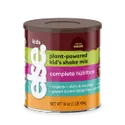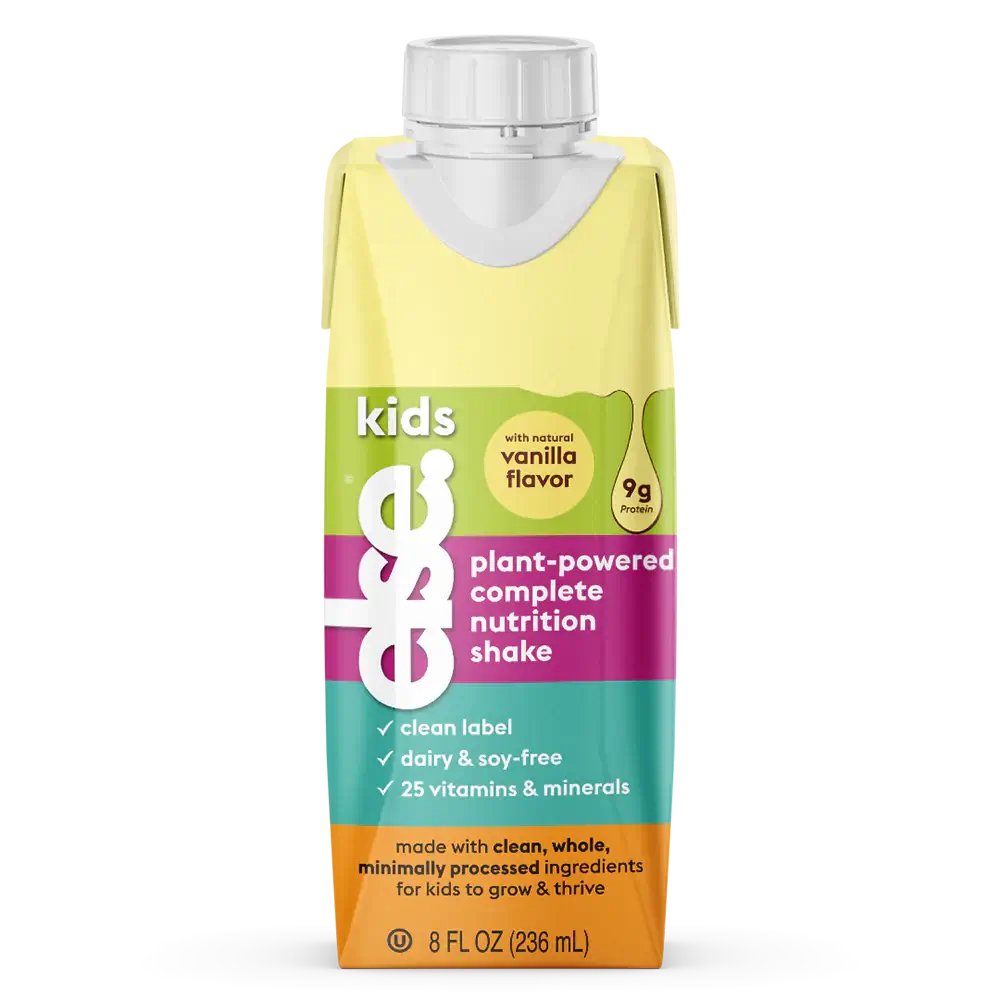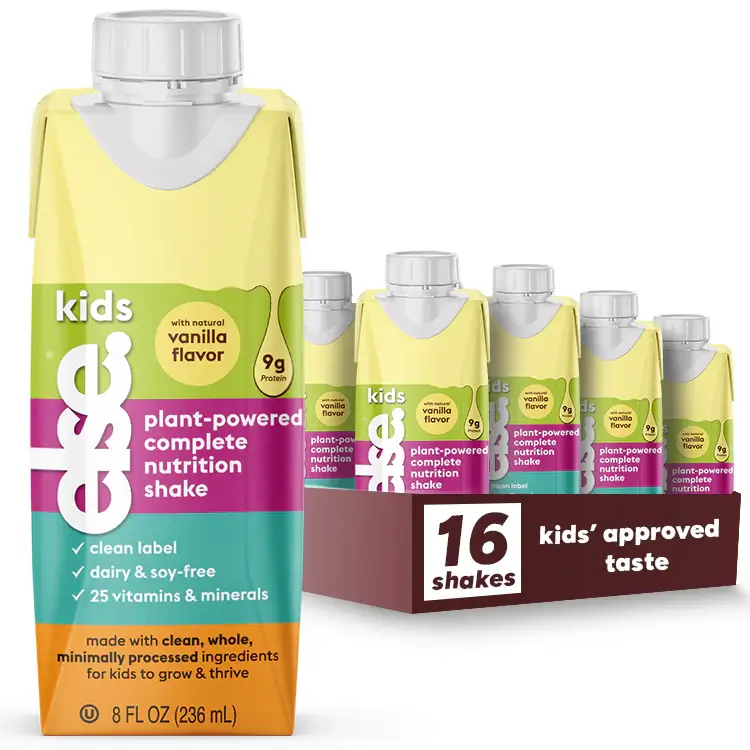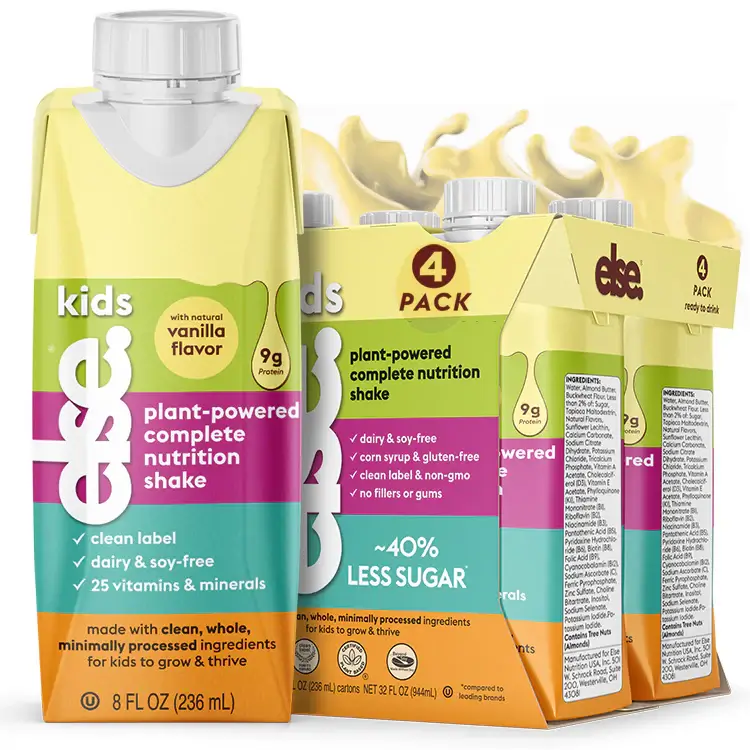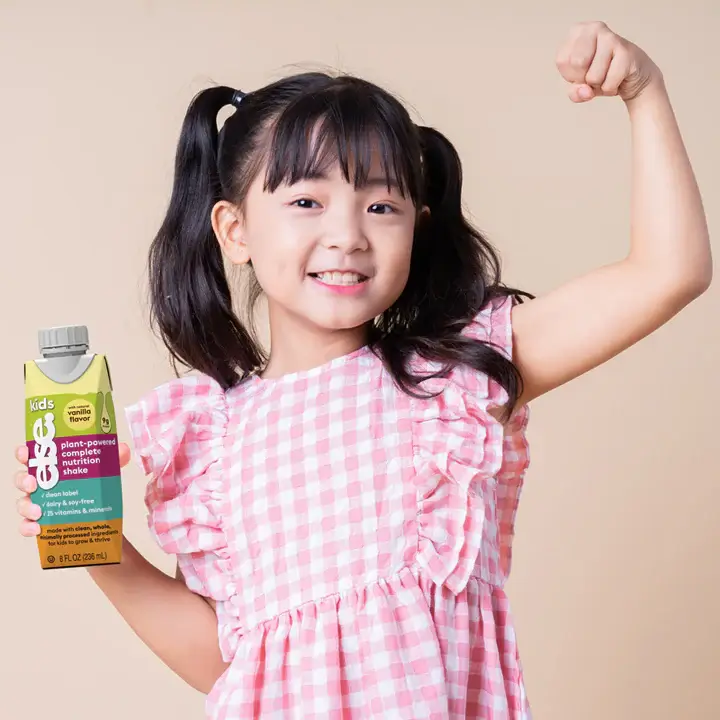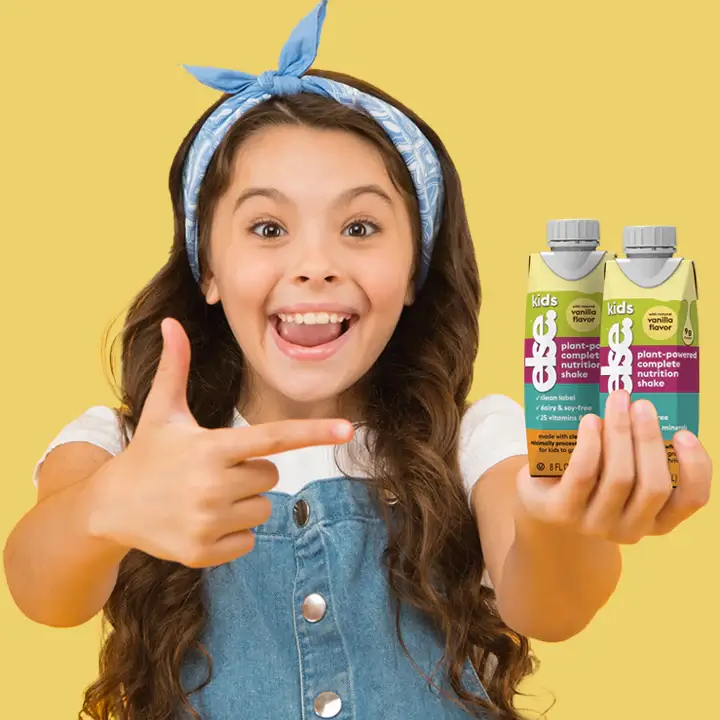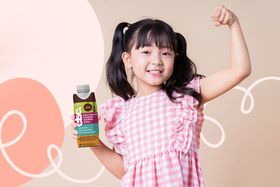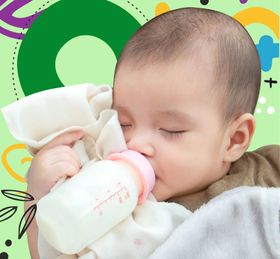How to Create a Balanced Diet for Kids
Find valuable information on crafting a healthy diet for children. Get practical advice and meal ideas to ensure your kids eat well!
Updated May 16, 2024
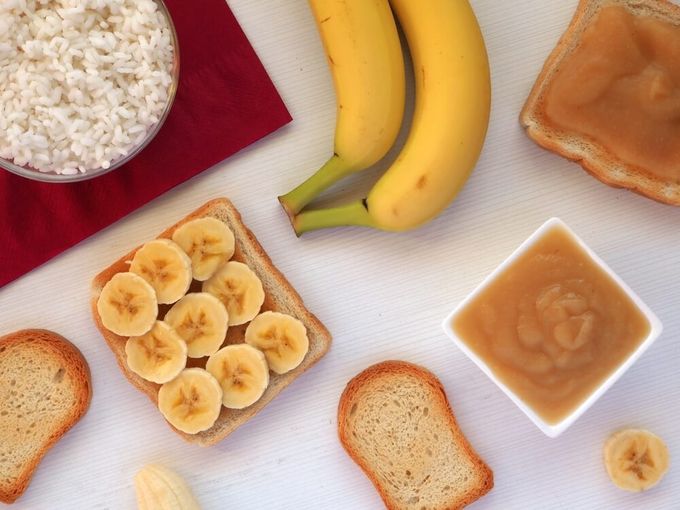
Some of the most prominent concerns among parents and caregivers are related to feeding their children well. Nutrition is a critical component of health for all ages, and making an effort to provide kids with the optimal diet from the start is important to support normal growth and development. Understanding what this looks like, and how to approach creating this type of diet is a great skill for parents to master.
What is a balanced diet for a child?
A balanced diet is one that nourishes a child well and neither includes restriction or overnutrition. This also means foods on a balanced, healthy diet shouldn’t have labels assigned to them, like “good” and “bad” foods.
Overall, good nutrition could include any food and look completely different between households. One family may choose to eat a totally plant-based diet, while another may include animal products, and both can be balanced.
Other families may need to avoid certain ingredients, or an overall food group, for allergy, religious, or cultural reasons. Ideally, all of these scenarios still include a wide variety of healthy, minimally-processed, nutrient-rich foods that feed a child’s growth.
Furthermore, this diet emphasizes foods that are backed by evidence that support optimal health, meet nutritional needs, reduce the risk of chronic diseases, and even improve longevity and quality of life.
One might say that eating this diet is also more than just the nutritious food on a plate. The practice of balanced foods goes hand-in-hand with mindfulness and intuitive eating skills, or teaching children how to listen to and honor their bodies and identify their hunger and fullness cues.
Most importantly, this will provide adequate nourishment that supports a child’s normal growth and development and fuels their active life.
» Read more about pediatrician's review on nutritional and healthy diet for kids
Healthy foods for kids
Overall, the idea of what makes food healthy is based on the same basic guidelines for all of us. The science is clear that the healthy food choices, which support normal growth and development for kids and help protect against chronic diseases, are unfortunately not the majority of foods that make up the western diet pattern.
The western diet, often referred to as the standard American diet, is largely based on highly refined and ultra-processed foods that are nutritionally poor and pro-inflammatory. Much of these foods are high in saturated fat, made up of simple carbohydrates, and contain large amounts of added sugar and processed oils. Fruits, vegetables, and other fiber- and antioxidant-rich plant foods are often sorely lacking on a western diet.
Some of the most pervasive examples today are greasy snacks in crinkly packages, sodas and juice boxes, fried foods, processed meat and dairy products, and sugary sweets normalized to be eaten at any time of the day.
Many of these foods are aggressively marketed to children through commercial advertising, painting a picture that kids are supposed to eat certain “kid-friendly” foods and that healthy food choices are reserved for adults. Much of this marketing is based on the misconception that kids will only eat unhealthy foods and are naturally averse to things like vegetables.
The truth is that the healthiest diet on the planet is one that’s primarily based on whole plant foods. These include fruits, vegetables, legumes, grains, nuts, and seeds. Ideally, these foods are eaten predominantly in their whole and minimally-processed form. For example, using fruits to make nutritious smoothies at home instead of purchasing sweetened fruit juice at the store.
The great news is that while these types of healthy foods are often shaped to be “adult foods,” they are absolutely appropriate and recommended to introduce to children right from the start. In fact, offering healthy foods regularly when kids are weaning from breast milk and/or infant formula can help set them up for adopting healthy habits early on. Else Nutrition's Ready-to-Drink Nutrition Shakes are made for these purposes. They are packed with 9g of pure, Plant-Powered protein per serving and 25 essential nutrients your child needs for healthy growth
Tips to encourage your child to eat a balanced diet
Perhaps the most important thing to remember about cultivating healthy eating habits for kids is that it’s a life-long investment. Just like adults who may not be used to eating certain healthy foods, kids may need to be introduced to something multiple times before even trying it. Offering healthy foods in multiple ways, or rotating some creative presentation ideas, can be helpful.
Additionally, before children may be inclined to make healthy choices for themselves, they need parents and caregivers to provide positive examples and encouragement. Once they learn what healthy foods look like, they can also learn how to help put balanced meals together.
Teaching children to adopt healthy eating habits is rarely easy and doesn’t happen overnight. This is especially true with toddlers, when it’s normal to experience more frequent phases when your child is a picky eater and they may be trying to establish more autonomy.
When feeding kids becomes challenging, it’s easy to fall into a pattern of bribing or providing an ultimatum to persuade kids to eat healthy food. However, studies have shown that this approach is more likely to backfire.
Instead, one of the most effective perspectives around teaching kids to eat well is Ellyn Satter’s Division of Responsibility in Feeding. With this approach, there’s a clear division between what the job of the parent is, and what the job of the child is, at mealtime. The idea is to put your energy into what really makes a difference and all the other details will fall into place.
Using this approach, parents and caregivers are responsible for:
- Choosing and preparing food
- Making mealtime pleasant
- Providing meals and snacks regularly
- Allowing the child to grow into their body in a way that’s right for them
- Showing the child healthy behaviors at mealtime
- Being respectful of the child’s lack of food experience without catering to likes and dislikes
- Not providing food or beverages besides water between eating times
- Trusting the child with their job at mealtimes
This means that children are responsible for:
- Learning to eat the food they are provided
- Eating the amount of food they need
- Growing and developing in the way that is right for them
- Learning to behave well at mealtime
The synergy between these roles and responsibilities helps your child identify and adopt healthy eating behaviors more effectively.
It’s also important to note that while they may not provide much in the way of nutrition, sweets and desserts should not be restricted from a child’s diet. This has also been shown to have the opposite effect than intended when trying to shape a child’s balanced diet.
Restricting less healthy foods almost puts them on a pedestal. This can make them seem more desirable and “special” than other foods, rather than something to enjoy occasionally as part of a balanced diet. To reiterate, it’s actually healthy to allow your child to eat a cookie sometimes!
How do you prepare a balanced diet for kids?
Preparing healthy foods, and offering them regularly, is a major piece of the puzzle when cultivating your child's diet.
One habit that can be helpful in preparing a balanced diet in your household is to regularly include your child in the planning and preparation. Depending on their age, they may be able to help pick out a new food at the grocery store, measure ingredients, or stir batters to bake.
Learning how to put together, prepare, and enjoy a healthy variety of food in ones diet during childhood is something that will pervade for life and serve kids as they become adults.
When it comes to actually planning meals, a good place to start is by designing a balanced plate. A great resource is The PB3 plate, created by the plant-based pediatric dietitians behind Plant-Based Juniors™. This plate is a visual representation of a healthy plate for young kids.
This approach includes 3 main components:
- Fruits and vegetables
- Legumes, nuts, and seeds
- Grains and starches
These components are divided into equal thirds because of the calorie density they each provide. For example, fruits and vegetables are nutrient-dense, but are also lower in calories than the other two categories, so they shouldn’t make up the largest portion of the plate.
Another important part of designing a balanced plate for kids is understanding where certain nutrients come from that support their normal growth and development. This helps ensure that sources of these nutrients are incorporated regularly.
Some of the nutrients to pay attention to include:
- Calcium for bones and teeth, found in greens and cruciferous vegetables, and oranges
- Omega-3, healthy fat for brain development, found in nuts, seeds, olive oil, and avocado
- Iron for healthy red blood cells, found in beans, lentils, dark leafy green vegetables, and soy foods
- Vitamin C to boost iron absorption, found in citrus fruits, bell peppers, berries, and tomatoes
A well-planned plant-based diet has been shown to be nutritionally adequate and safe for all ages. It should be noted that, as long as calorie intake needs are being met by a wide variety of healthy foods, it’s very rare for there to be a deficiency in macronutrients like protein.
Fat is also incredibly important, which helps provide calories and nutrition for brain and cognitive development. Toddlers should be getting 30-40% of their calories from fat.
For plant-based children, certain dietary supplements are also essential when designing a balanced diet that meets all of their nutrition needs. This includes vitamin B12 for vegan children, and may also include vitamin D, omega-3, iron, and iodine, depending on what your child’s overall diet pattern looks like.
Additionally, while whole cow’s milk has long been the automatic recommendation for kids weaning from breast milk or formula, times have changed. If your family chooses not to consume dairy or use whole milk on the side of balanced plates, fortified soy or pea milks are also good options as they have similar protein content and nutritional makeup for kids.
Healthy meal ideas for kids
Every parent goes through seasons when balanced meal ideas are hard to come up with. When this happens, find tools and resources that provide meal inspiration and can trigger creative ideas in your kitchen. This may look like an online search through recipe blogs, pulling out an old cookbook, or asking a friend with kids of similar age for suggestions.
To get you started, below are a few examples of healthy meal ideas for kids. These aren’t meant for comparison or to use as personal nutrition advice, but rather to be used as a jumping off point as you evaluate how you might be able to use your family’s favorite foods to create new healthy plates.
Balanced Mealtime Ideas
🍳Healthy breakfast ideas
- Oatmeal made with rolled oats, topped with raspberries, almond butter, and hemp seeds
- Whole grain toast with mashed avocado, thinly sliced tomatoes, and lemon juice
- Scrambled firm tofu made with finely chopped broccoli and bell peppers, cooked with extra virgin olive oil, garlic and onion powder
- Sweet potato waffles topped with blueberry syrup
- Mini quiches made with eggs or vegan egg substitute, full of mixed veggies
🍜Healthy lunch and dinner ideas
- Bean and non-dairy cheese quesadillas, topped with avocado and salsa
- Chickpea salad sandwiches with a side of orange slices
- Hummus and Vegetable wraps with a side of sliced cucumbers and mango
- Roasted veggies and tofu cubes served over cooked quinoa and a side of pears
- Spaghetti topped with marinara and canned lentils, with a side of sauteed spinach and garlic
🥪Healthy snack ideas
- Banana boats, made by slicing bananas lengthwise in half, spread with peanut butter and topped with ground flax seeds
- Chia pudding, made by combining soy milk, vanilla extract, and chia seeds and letting set before topping with fruit
- Smoothies made with spinach and kale, green apple, frozen banana, pineapple, and non-dairy milk
- Apple nachos, made drizzling melted nut butter over thin apple slices and topping with raisins
- Yogurt bowls with sliced banana, berries, and seeds
Keep in mind that your child’s plate, including the healthy snacks above, should be adjusted accordingly to make them age-appropriate. For instance, babies and toddlers should never be given choking hazards like whole nuts, but thinned nut butters used as a spread or tiny seeds mixed into various recipes can work well.
Complementing a healthy diet
As you cultivate a diet pattern with your kids, it’s normal to experience obstacles and learning curves. Nutrition is a long-term investment, and there’s nothing wrong with finding ways to complement solid foods during periods of selective eating or times when additional calories are needed.
For example, Else Nutrition offers supplemental toddler formulas and kids nutrition shakes for this purpose. Our protein shakes for kids and toddlers were not designed to replace meals or be used as a substitute for whole foods, but to provide an option for families looking for an additional source of complete nutrition in a convenient way. Plus, they’re free from soy, dairy, and corn, and gluten, use only organic, non-GMO ingredients, and can fit well in just about any diet pattern.
Creating a sustainable diet takes time and often looks different between households. What’s most important is that your child is regularly provided with foods that meet nutrition and developmental needs, and helps encourage healthy habits. If you have concerns about your child’s nutrition, or physical growth, it’s always best to speak with your pediatrician and/or a dietitian for individualized advice.
The content and advice provided in this article is for informational purposes only and is not a substitute for medical diagnosis, treatment, advice for specific medical conditions. Always consult a pediatrician to understand the individual needs of your child.




